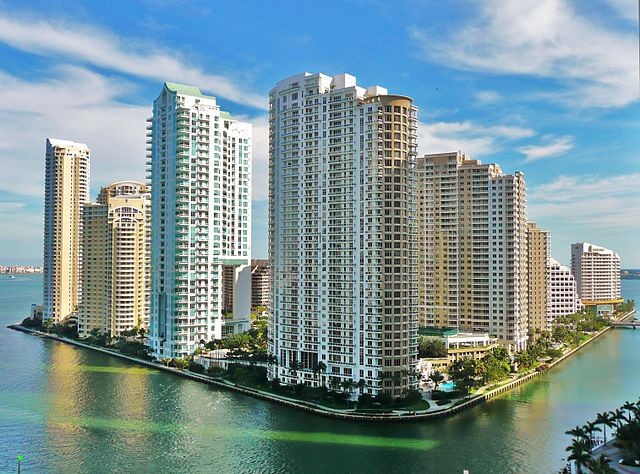A new study by the University of Miami has revealed alarming rates of ground subsidence affecting dozens of luxury high-rises along Florida's southeastern coast. The findings indicate that iconic buildings, including the Surf Club Four Seasons, Trump Tower III, and Ritz-Carlton Residences, have sunk between 0.8 and three inches between 2016 and 2023. The revelation has sparked concerns over structural stability and the implications of rising sea levels.
According to the study, nearly 70% of the buildings in northern and central Sunny Isles Beach, a prime location for high-end real estate, are experiencing significant subsidence. Other affected areas include Surfside, Bay Harbor, and Miami Beach. This phenomenon could pose severe risks to thousands of residents and visitors who frequent these high-rise buildings, some of which feature penthouses priced in the millions.
"Almost all the buildings at the coast itself, they're subsiding," said Falk Amelung, a geophysicist at the University of Miami and the study's senior author. Speaking to the Miami Herald, Amelung described the extent of the issue as "a lot."
The findings come in the wake of the catastrophic collapse of the Champlain Towers in Surfside in 2021, which claimed 98 lives. While the study's authors clarified that subsidence was not observed in the Champlain Towers prior to the tragedy, their research identified subsidence in properties to the north and south of the site. The collapse has heightened scrutiny of structural integrity across the region, leading to state-mandated structural reviews for older buildings.
The study utilized satellite imagery to measure subsidence-ground movement that pulls a building's foundation downward-by fractions of an inch. Researchers noted that the causes of this subsidence are still under investigation but may be linked to erosion, stronger ocean waves, and groundwater pumping, all of which could be exacerbated by rising sea levels.
Experts suggest the sinking may reflect broader environmental challenges. Paul Chinowsky, a professor of civil engineering at the University of Colorado Boulder, cautioned that "it's probably a much larger problem than we know." Rising sea levels and the erosion of South Florida's porous limestone foundation may be accelerating the problem, he added.
The study identified several high-profile buildings impacted by subsidence, including the Porsche Design Tower and Trump International Beach Resorts. Local officials and building management teams are beginning to address the issue. Sunny Isles Beach Mayor Larisa Svechin told the Miami Herald that she had called a meeting with the city manager to discuss the study's findings but stated that she was not yet aware of any structural issues in the affected buildings.
The sinking buildings raise broader questions about the sustainability of development on barrier islands and the vulnerabilities posed by climate change. Coastal Miami, with its dense cluster of high-end residential and commercial properties, sits precariously on a foundation of limestone-a porous material that is susceptible to erosion and seawater intrusion.
This issue underscores the region's growing exposure to climate-related risks. The National Oceanic and Atmospheric Administration (NOAA) predicts that rising sea levels, driven by global warming, could displace millions of Florida residents and cost billions in damages by the end of the century.
For now, the long-term implications of the subsidence remain uncertain. While the rates identified in the study are relatively slow, experts warn that any ground movement could lead to cumulative stress on building structures over time. Local governments and property managers are expected to commission further investigations to determine the scope of the issue and whether mitigation measures are necessary.






